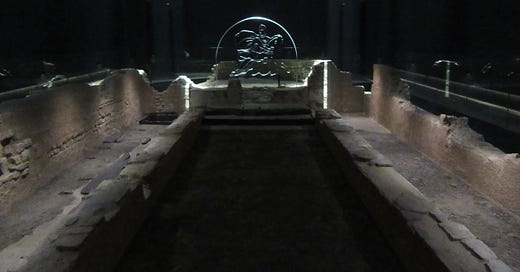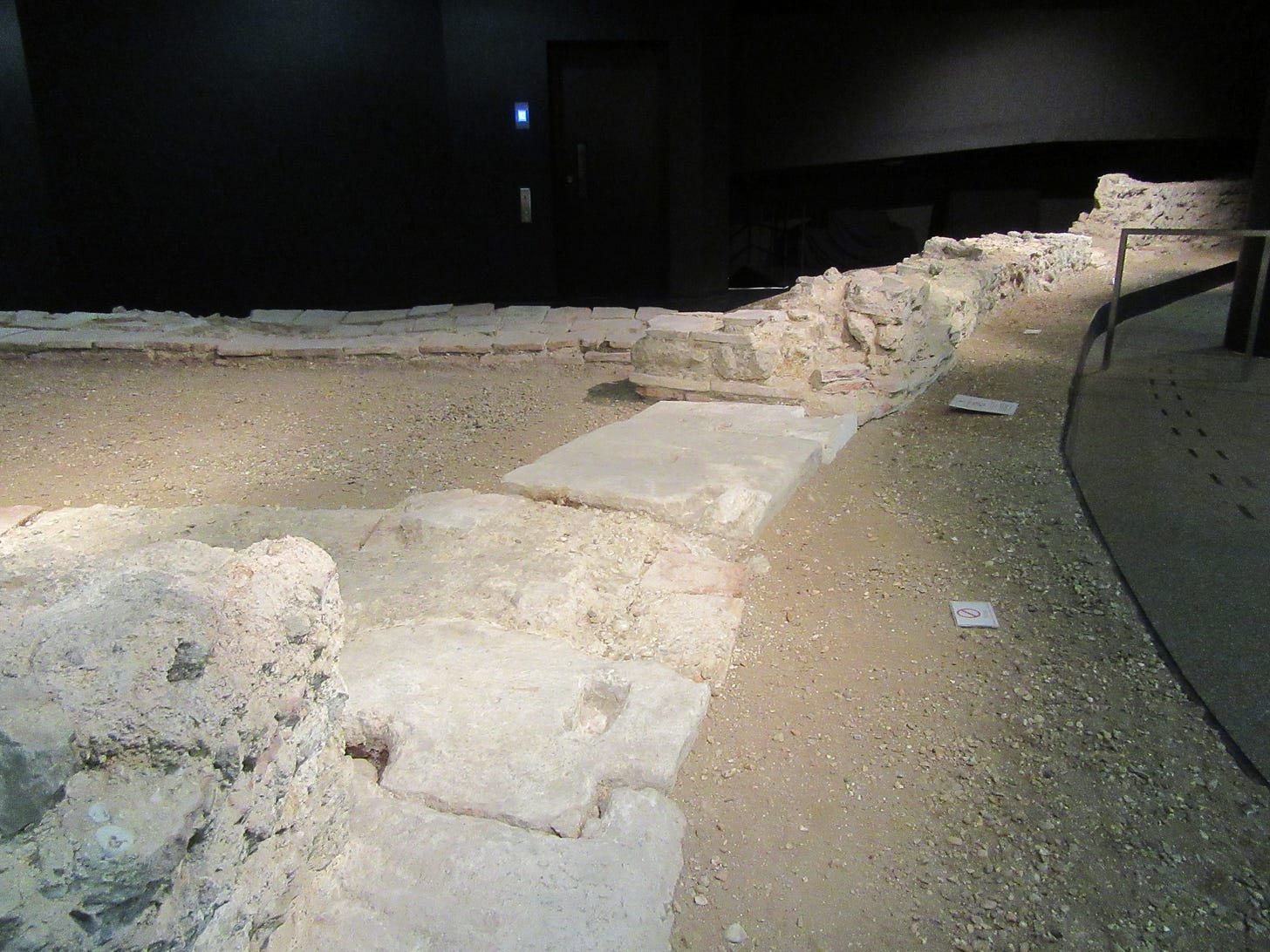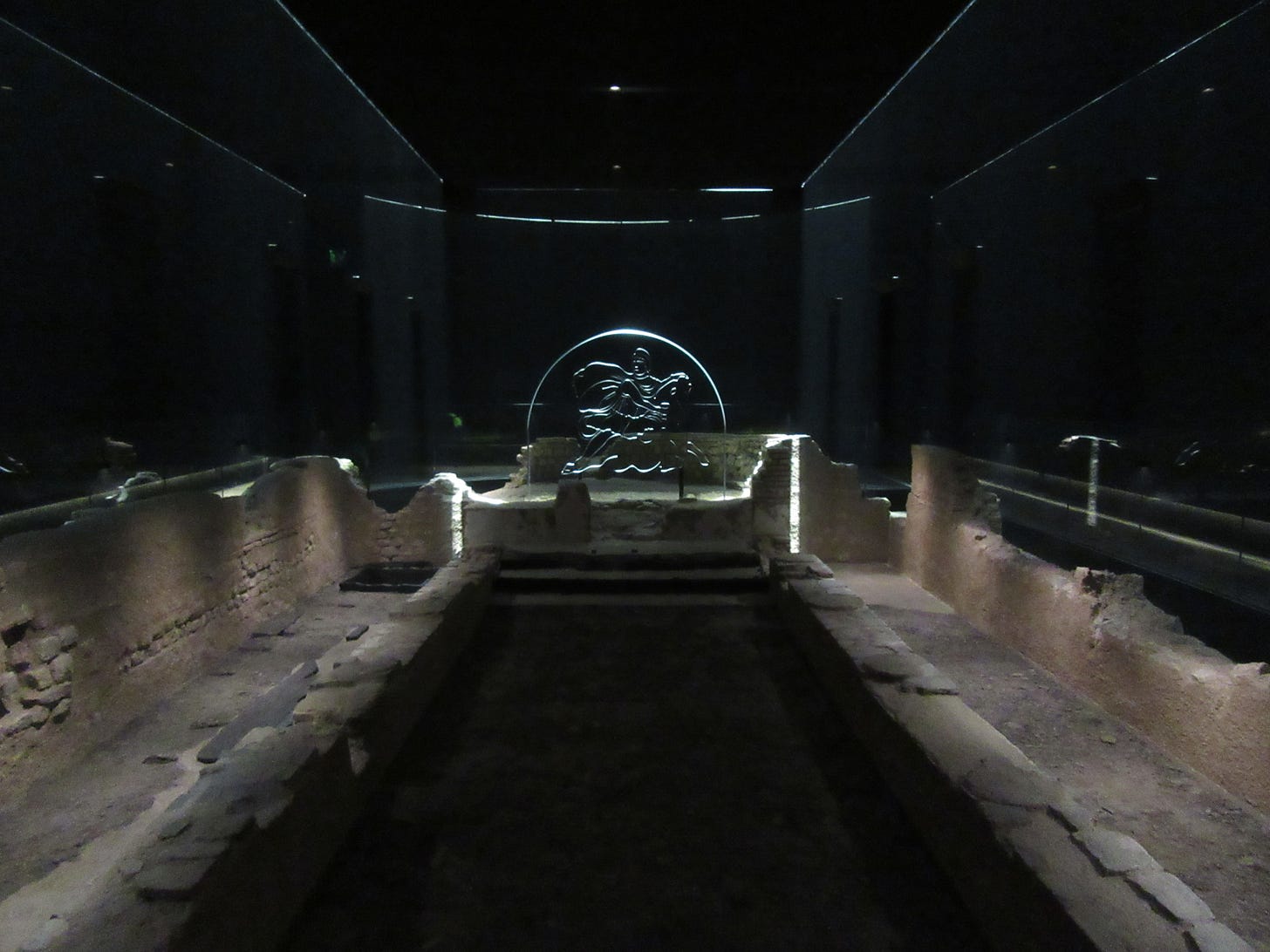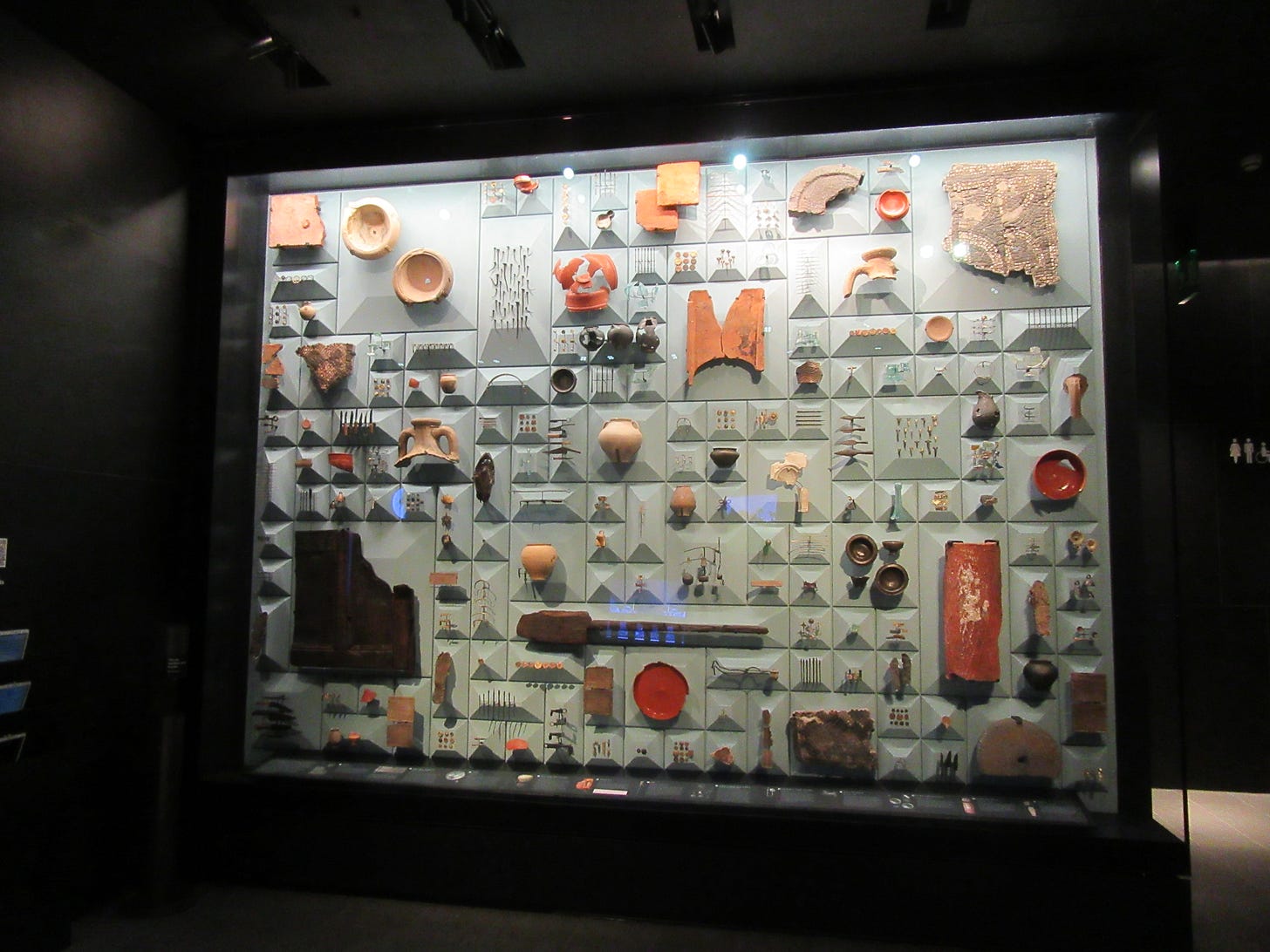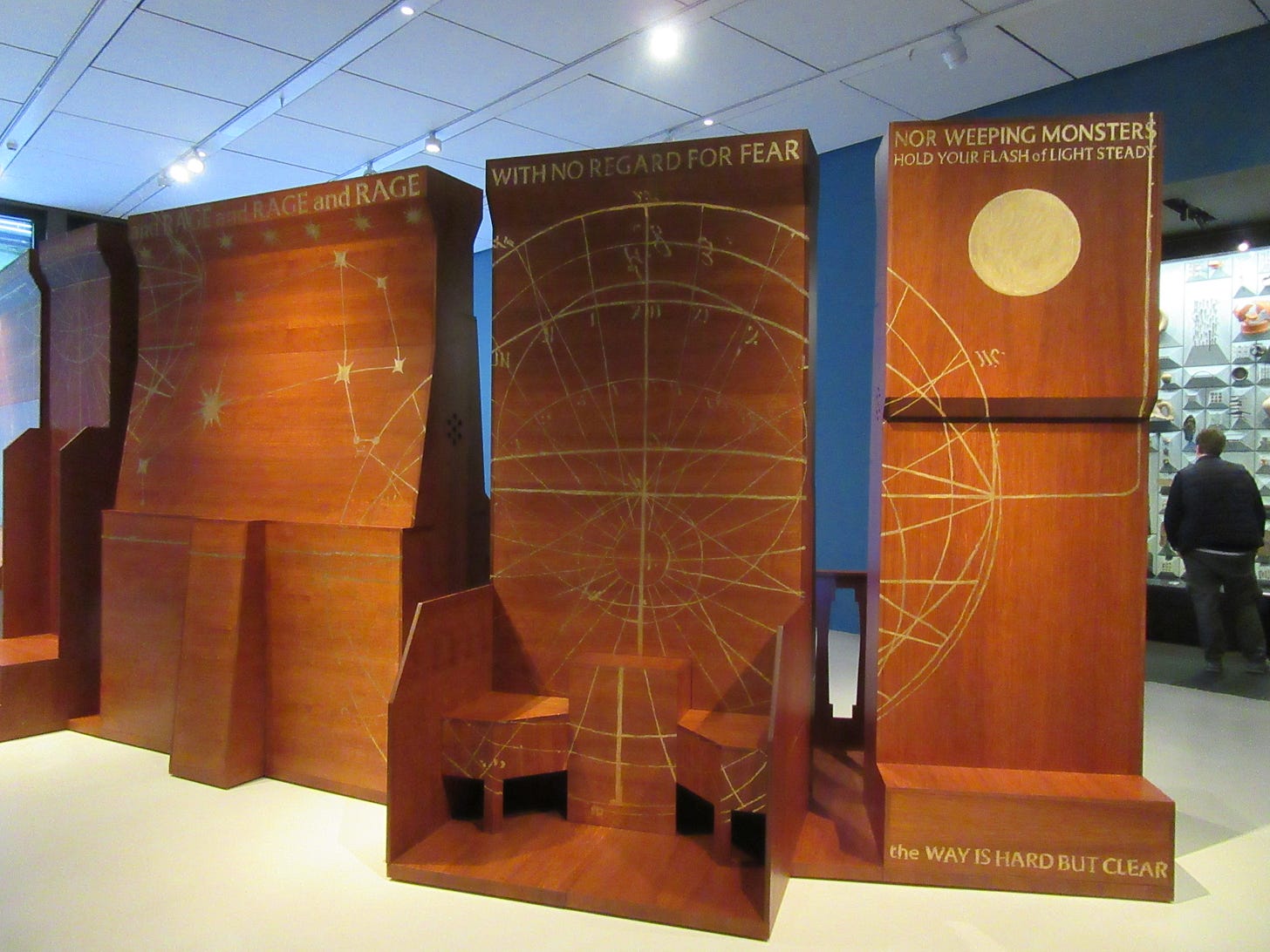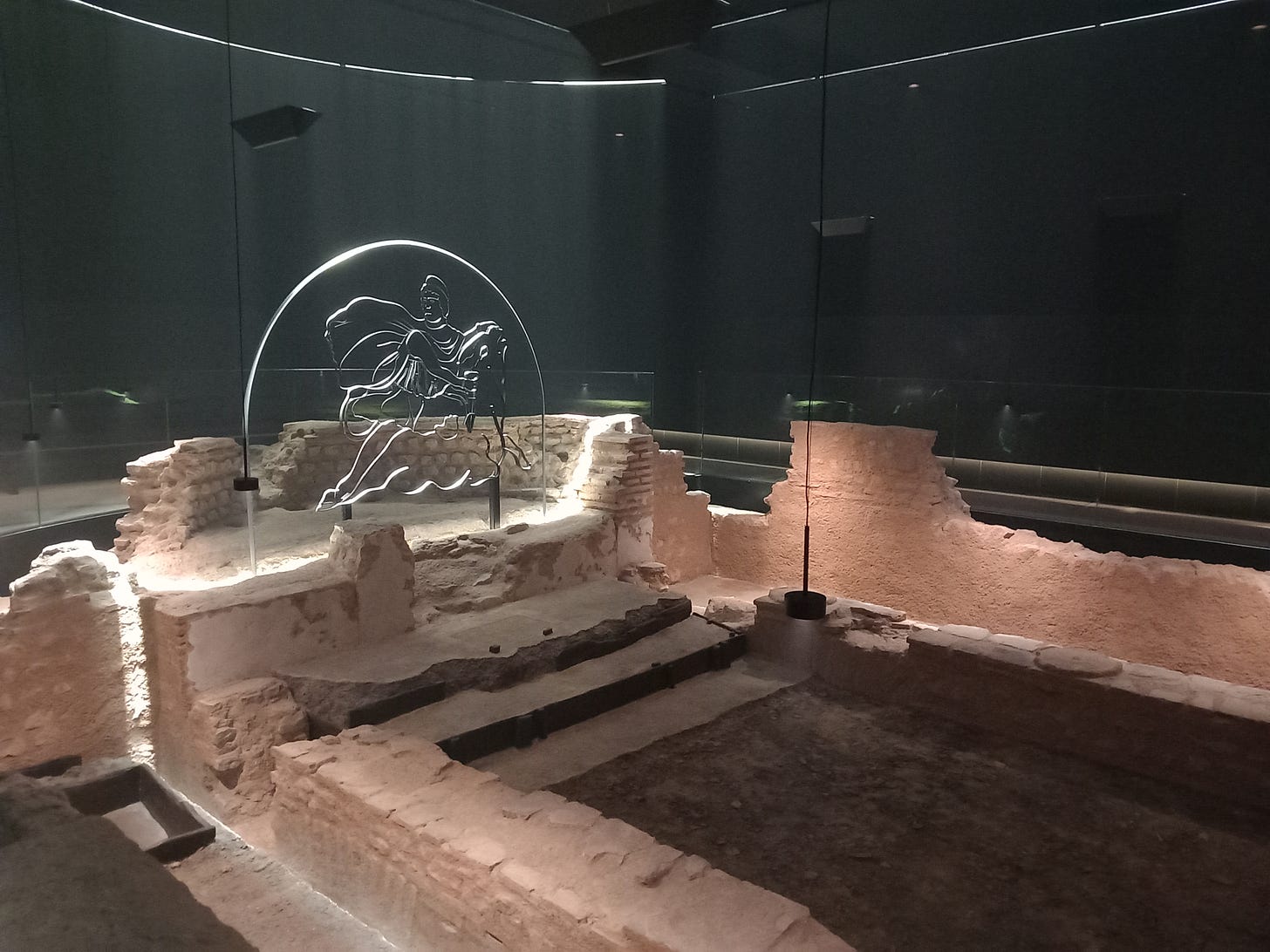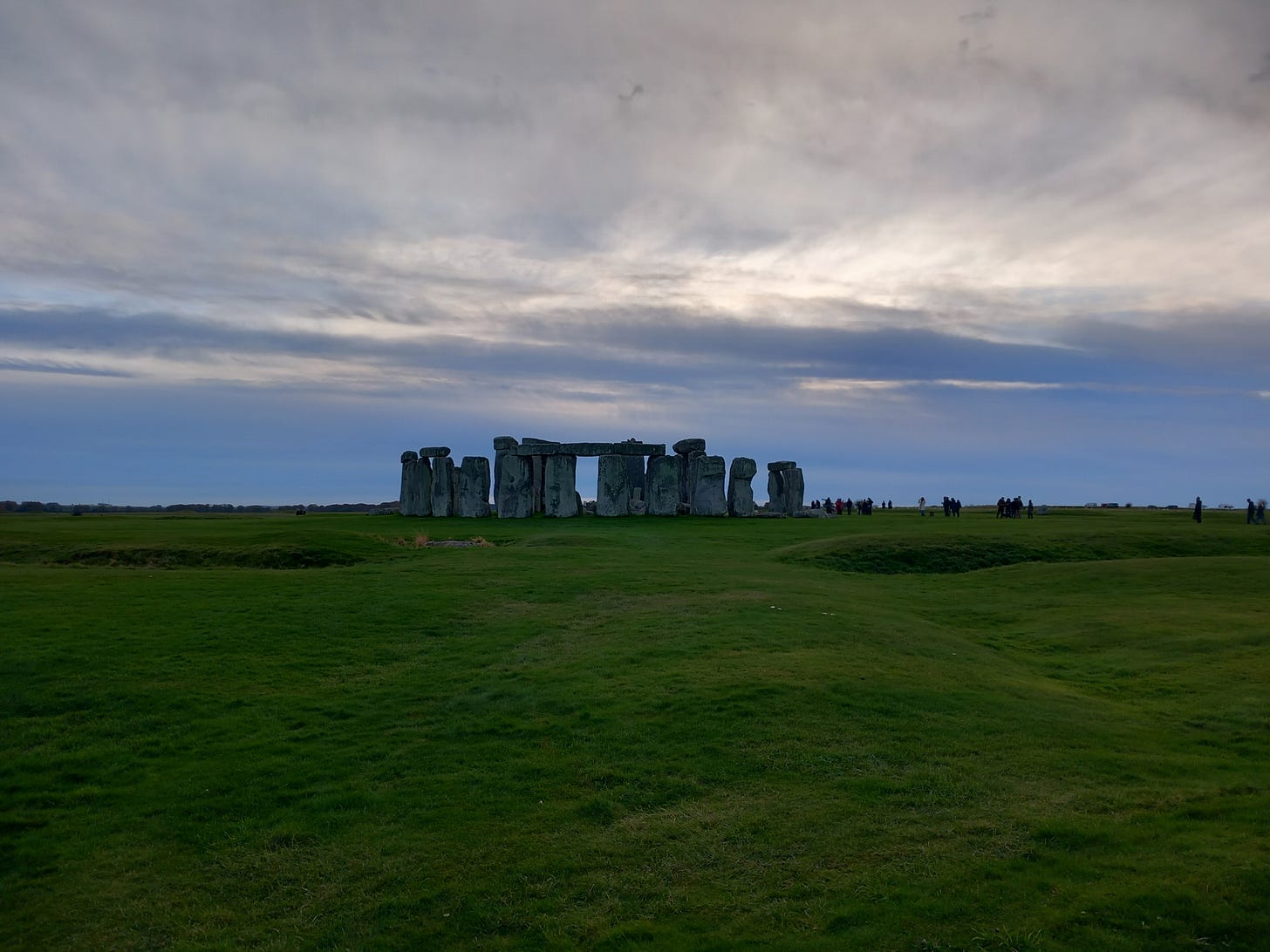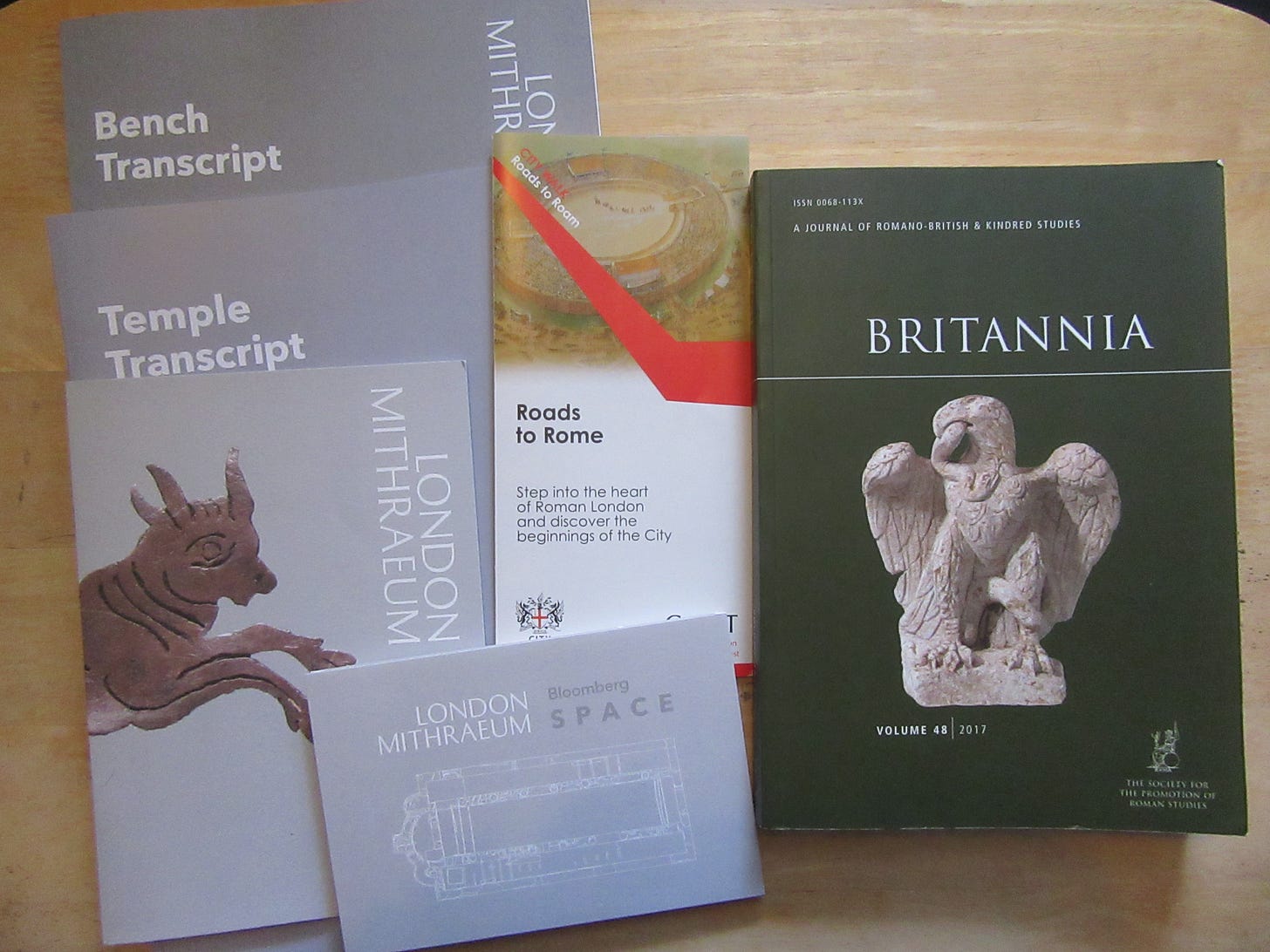Weekly Roundup Vol. 8
Roman Ruins under London and the Stonehenge Festival of Neolithic Ideas
Welcome to this week’s roundup! This week was once again bookended by two day-visits to amazing places, where I saw, experienced and learned a lot. So, I think I’ll dive in.
Visiting Roman London
Not with a time machine, but the next best thing: museums…
We’ll go back a little bit further actually. On Monday, I put the finishing touches on my short story writing about Roman St Albans, up to setting sights on Roman London. And lo and behold, the next day, my parents take me on a surprise day out to visit two more-than-ruins.
London’s Roman Amphitheatre is beneath the Guildhall Art Gallery, so I got some bonus paintings to gaze at as well, in a nicely-sized gallery just with a few sections dedicated to certain themes. The great part is that it’s all free. I’ve been to the Trier amphitheatre which is pretty much intact. Still, it was great to see this section of ruins, the intact stones, bricks, rooms and wood from the surviving water system, and to get a wider understanding of Roman London’s layout from the displays above the ruins.
This was only the starter though.
The main course was something I think I had vaguely read about, some mention somewhere. This was London’s Mithraeum, a temple to the god Mithras, a different sort of deity whose cult travelled the Roman Empire. Mithras was based on the Roman perception of Mithra, a (pre-)Zoroastrian god. I’ve found Mithras’s temples to be much more similar to the layout of Christian churches, with a central nave, two aisles, and an apse with an altar at the end. They had no windows, though, and this one especially would’ve been damp and more cave-like than usual, built beside London’s lost Walbrook river.
The original ruins had been moved from where they were found to sit on street level in London until 2010, something I never knew about, until Bloomberg L. P. bought them reassembled them more as they would have been, preserving the ruin underground at the Roman street level (two floors down now) with an exhibition space in the floors above.
This wonderful selection of artefacts is only a fraction of those found. Some of the more important things are at the Museum of London, though. Still, each square you can see above had an entry on tablets at the wall, so I spent quite a while going through nearly every one… And behind that they also display modern art pieces inspired by the Mithraeum. I really liked the one currently on display:
On the front of it were screens showcasing various dream-like related imagery. The best part of the experience though was the experience. And by that I mean the few-minute-long mist, light and sound show that would play every twenty minutes.
The staff were so nice there, handing out free transcripts of the panel-like audio that played in the waiting room all about the possible beliefs and structure of Mithraism, and a transcript of the immersive experience. So, I think I’ll have to visit this site in my writing - and I have the exact experience and transcript to draw from. You could hear and see the torches being lit as men (only, sadly) came into the temple, then the different levels of initiate said their verses. After that ritual they had a meal, then there was a big chorus for the closing of the temple.
The Mithras cult was a different sort of Roman religion, much more based on the sky, the sun and moon, zodiac and the seasons. Mithras slew a bull in a cave that all the temples are modelled on, a kind of creation story.
The staff answered all my questions on the site, and then on the way out gave us loads of leaflets for further Roman sites to see, and each of us got a collection of postcards with temple-related photos as well as photos of all the previous modern installations. It was a great experience and I’d really recommended going if you’re in the City of London - it’s free, and you’ll learn and experience something new.
We also went into two example of more modern temples, two Christopher Wren churches that I’d never visited before. Right next to the London Mithraeum is the church where The Samaritans started. They still have the original phone!
Obligatory Writing Section
Well here we are again. Like I’ve said I finished the St Albans section of the short story I keep banging on about. It’s short, but takes a long time to write! I spent a decent portion of Wednesday going down memory lane for this post, talking about writing my first playscript for a school project, and how we put on the first scene. If you haven’t checked it out yet, please do. It was a lot of fun to share.
Thursday and Friday I spent on my screenplay-related activities. After meeting my tutor again at our reunion last week, I went back for another draft of my spec pilot The Watchers (which you’ll hear about more in the coming weeks). I’m still working on that, but it was great to get back into that different sort of writing, a medium I’ve felt where it’s easier to make quick changes. I think for me a screenplay is much easier to see as something in flux. And I really like what’s constantly being moulded from others’ advice and my own new ideas. I’ll be entering that off to some competitions this coming week!
What also helped get me into the screenwriting headspace was this panel that I found through Chris Ryall and his Substack:
. Definitely subscribe to his newsletter, especially if you like comic books!It was really informative and inspiring if you have the time.
Stonehenge Festival of Neolithic Ideas
What a creatively and historically exciting week, eh? And we’re not even done. Though an event running the whole weekend, I only went yesterday to this new festival English Heritage are experimenting with. Still, I learnt so much about ‘prehistory’, fitting in everything possible really for one day. And the highlights were meeting and talking to, and listening to talks from, so many experts in this era that I’m fascinated with and am using them as a basis for so much of my recent storytelling.
I don’t really have any good photos of the event that I can share - whether I actually can share some of them. But here are the stones yesterday, actually the last thing we did:
In the exhibition centre and outside by the recreated huts were many stalls and demos aimed at educating people of all ages not only about the history, the big meanings, but the day to day life of people over time, the landscape as a whole, and all the wondrous scientific processes used to understand all these things from thousands of years ago. There were brilliant talks too, up in the education centre by the coach carpark, on gold artefacts, alignments, enclosures, pits, hazelnuts - the whole package.
There are too many highlights really. It was amazing just to be surrounded by that passion and knowledge, and I made some contacts too! I couldn’t believe I was talking to people who’d studied the long barrow by where I went to primary school, the one I based my Children of Shadows writing on. I learnt so many interesting things about the site that I’d glossed over in the actual fiction writing. And one of the speakers from the talks even made the effort to come and tell me more about the site that was the ‘Neolithic idea’ that he shared. There were so many ideas actually that sent off so many fireworks of inspiration. I still have to type up all my notes!
One thing that was certainly special was showing Phil Harding a piece of flint. Now, if you’re unfamiliar, that may sound like a strange sentence. Phil was a major part of the long-running archaeological show Time Team, so I knew him from watching old videos and DVDs with my family growing up. It was also a piece of flint that I found while at primary school, I think from the slope of the North Downs, that I think I knew at the time could’ve been something, from the way it felt in my hand, to the sharp serrated edge. Phil confirmed it was in fact a prehistoric scraper tool, based on the bumps marks from where it was hit at the back. Then later, outside, he demonstrated how it was made for me, sizing up a chunk of flint, hitting it a few times with a stone, and producing in a few moments a tool pretty similar to the one I’ve had sitting in a box for over ten years. So, now I have two flint tools on that box! One actually prehistoric, and another made yesterday! (Maybe I should’ve shared that flint with more of the scientists, though I probably will include it in an email to one later today - maybe it will be an important find!)
We also walked back from the stones via some burial mounds and 1.7 mile-long cursus enclosure, something I hadn’t done when I visited in September. It was special to walk those sites I’d read about, the mysterious cursus rectangle predating Stonehenge by hundreds of years.
To conclude, if you’re thinking about visiting or are in the area the next time the festival’s on, definitely go! It may be a bit busier but all the talks and tours and experiences are free with the usual entry price, making it so much more worth it, and shedding much more light on prehistoric lives and monuments. (Those stones get all the attention).
This week’s books
This segment showcases the new additions to my research and fiction collections.
Here we have all the resources and mementoes kindly given out by the staff at the Mithraeum, plus an academic book my dad managed to pick up at a charity shop. It has articles on Roman London that will really come in handy for writing later this coming week after I finish the latest screenplay draft. And, as well as lots of Hadrian’s Wall information, the book has an article on North Leigh, where a gradiometry survey has revealed the outlines of more buildings, the further course of the road from the villa, and the possibility of a canal of sorts! Some things to add back to my earlier writing once this section of the short story is done, I think.
Thanks for reading! Let me know how your week went, if you feel like it.
Cheers,
Harvey

